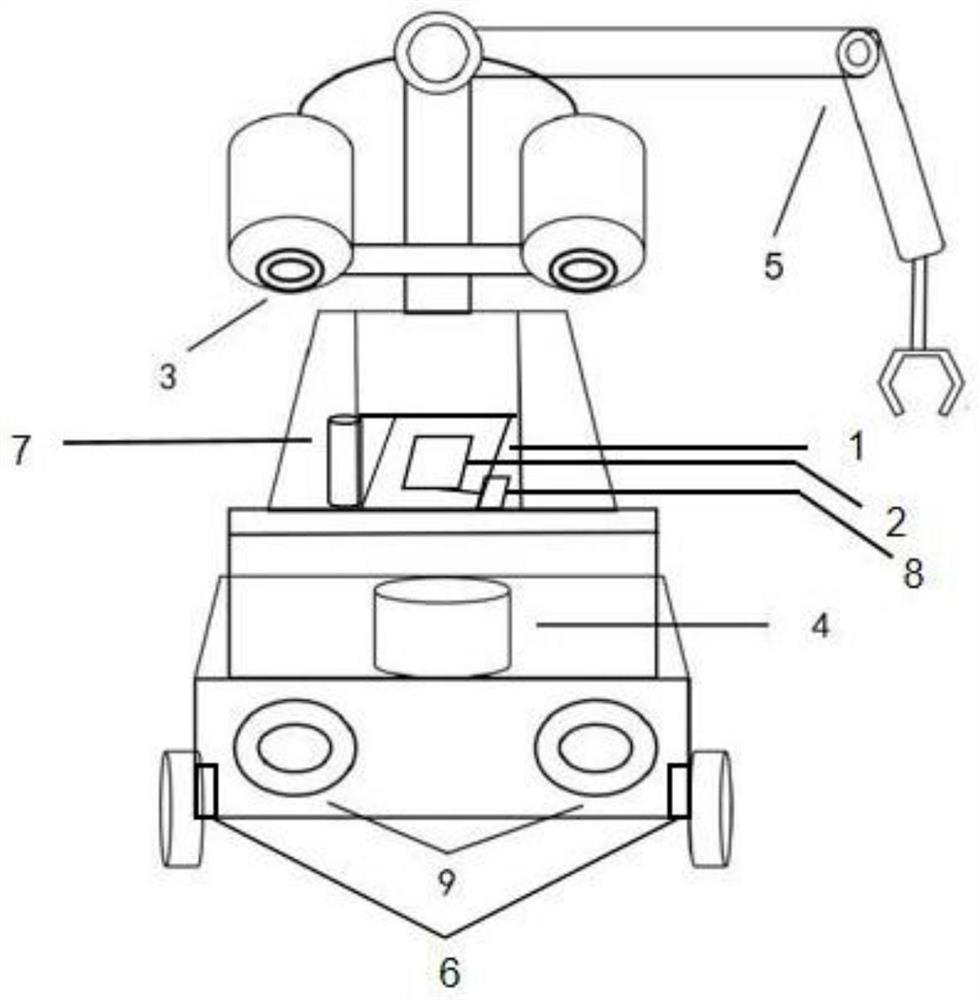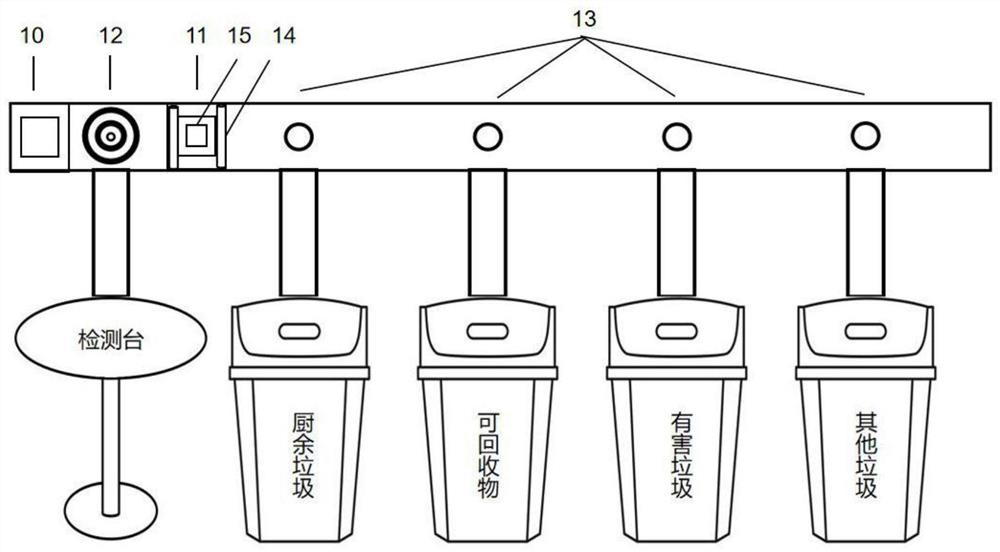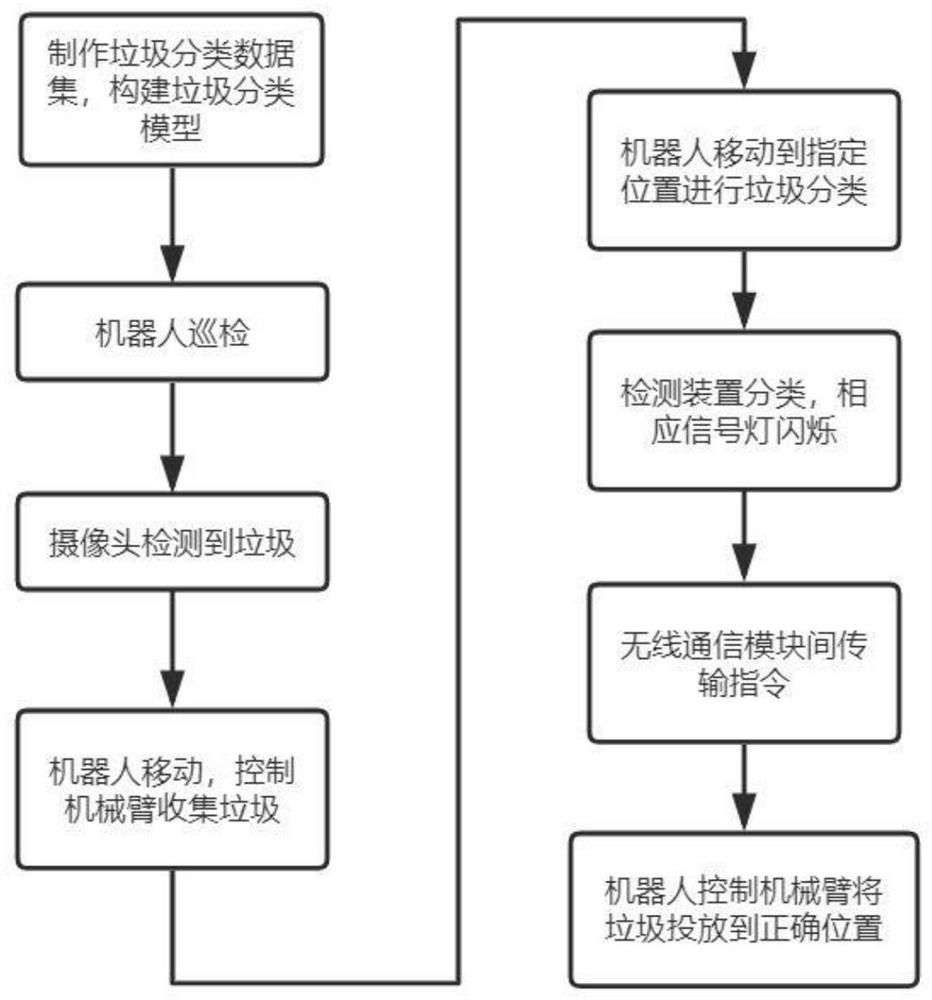Garbage classification and detection system and method based on computer vision
A computer vision and garbage classification technology, applied in the field of deep learning, can solve the problems of lack of classification and recycling links, complex operation, low precision, etc., to achieve the effect of saving manpower, high matching degree and improving work efficiency
- Summary
- Abstract
- Description
- Claims
- Application Information
AI Technical Summary
Problems solved by technology
Method used
Image
Examples
Embodiment Construction
[0041] The specific embodiments of the present invention will be described in detail below in conjunction with the accompanying drawings.
[0042] On the one hand, the present invention provides a garbage sorting detection system based on computer vision, including a garbage picking robot and a garbage sorting detection device;
[0043] In this embodiment, the garbage picking robot such as figure 1As shown, the first upper computer module (1) adopts the low-power embedded development platform Nvidia Jetson Tx2, the laser radar (4) adopts Radium God N30101B, and the first lower computer module (2) adopts Arduino Mega 2560 single-chip microcomputer, and the motor drive The module (6) adopts L298N, and the wireless module (8) adopts NRF24L01. The first host computer module is connected to the binocular camera (3) and the laser radar (4), and is responsible for processing the multidimensional array calculation in the visual information, the laser radar information and the algorit...
PUM
 Login to View More
Login to View More Abstract
Description
Claims
Application Information
 Login to View More
Login to View More - R&D
- Intellectual Property
- Life Sciences
- Materials
- Tech Scout
- Unparalleled Data Quality
- Higher Quality Content
- 60% Fewer Hallucinations
Browse by: Latest US Patents, China's latest patents, Technical Efficacy Thesaurus, Application Domain, Technology Topic, Popular Technical Reports.
© 2025 PatSnap. All rights reserved.Legal|Privacy policy|Modern Slavery Act Transparency Statement|Sitemap|About US| Contact US: help@patsnap.com



